Be the Change You Wish to See in the World | Make a Pilgrimage | Host a Crowd- Pleasing Tailgate | Live with “Zozobra” | Encourage Others | Make Things on Campus with a High Fun Factor | Create a Successful Restaurant Concept | View Minority Representation in Movies | Think about Time Travel | Make an Elevator Pitch | Become an NBA Team’s No. 1 Fan
__________________________
How to Be the Change You Wish to See in the World
Imagine leading a nonviolent movement that triumphs over an empire.
That’s what Mahatma Gandhi did. The lawyer who traded his suits for a loincloth championed the cause for India’s independence from British rule and succeeded. But don’t quote him on “Be the change you wish to see in the world.”
Associate Professor Raisur Rahman, chair of the history department and an expert on South Asia, says it’s more accurate to say: “We are but the mirror of the world.” Gandhi’s view was that “the tendencies of the outer world are basically the same as what we have in our body, and what we do is going to change what the outer world does and how it looks at us.”
Rahman describes how Gandhi went from growing up in a conservative household to spending time in London with its wide range of cultures; failing as a lawyer in Bombay; succeeding as a lawyer in South Africa; and then returning to India. Those experiences and his mistakes shaped his famous approach.

Photo courtesy of the Mansell Collection/The LIFE Picture Collection
“If you want the world to be a better place; if you want the world to be a kinder place; if you want the world to be kinder to you, you need to start from yourself,” Rahman says, and position yourself as an example. “You don’t wait for good things to happen to you. Begin that change, and things automatically will move in that direction.”
Despite his “follies and faults” that Rahman says Gandhi himself acknowledged, Gandhi “is far more important now than he ever was.” His lessons can be applied at the individual level all the way up to that of the nation state.
“We want a fair, equitable, socially just and inclusive society. Gandhi has something to say about each part of that,“ Rahman says. “He gives out this powerful message of nonviolence to deal with a violent world. …”
He was nonviolent but not passive. He was nonconfrontational but not advocating complete surrender. (If a woman were attacked, for example, Gandhi would argue she should fight back with all her might.)
The core of Gandhi’s philosophy and politics? Rahman says it is “Satyagraha, which is translated as ‘Truth-force.’ So, he says that more than fighting, he is about compelling people to believe in the truth. … Truth-force is if there is somebody who’s inflicting atrocity on you, you basically go and not only bear with the atrocity but resist in a peaceful manner — so much so that you corner and push that person to stop doing that, and that’s the real victory.”
__________________________
How to Make a Pilgrimage
Have you considered going on a pilgrimage? You have more options than ever.
Alison T. Smith (’83) has completed three pilgrimages totaling 519 kilometers on different segments of the famous Camino de Santiago, which has routes in Spain, France, Portugal and throughout western Europe. She walked the way of Saint Brendan in Ireland and has gone on “micropilgrimages.” She is the co-editor of the book “Women and Pilgrimage” and another, coming in the summer, “Pilgrimage in the 21st Century: A Kaleidoscopic Inquiry.” Smith is also an adjunct professor teaching first-year seminars and French at the College of Charleston in South Carolina and a retired associate professor of French at The Citadel.
“Tapping into an inner sense of peace. That is really what I think is at the heart of it,” Smith says of a pilgrimage.
Being in nature while hiking the Pacific Crest or Appalachian scenic trails brings psychological and health benefits. So do pilgrimages, but the endeavors differ. “Going on a pilgrimage implies at least a duration of a time of walking. It could be just a day or two,” she says. “The main thing is allowing yourself the amount of time you need to detach from your everyday preoccupations and worries to turn inward. For people of faith, it’s going to be prayer. For people who are of a secular nature, it could be meditation, relaxation techniques, focusing on breath.”
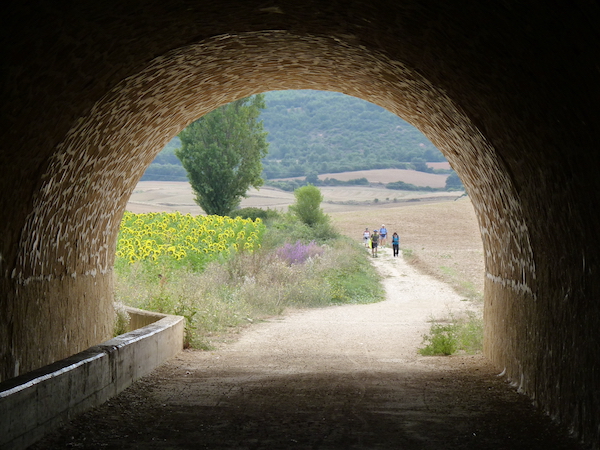
PHOTO/Gregory Fish
On the Camino, where it can take a month to complete the traditional route from the French border all the way across Spain, those on pilgrimage find camaraderie as they walk, sometimes moving at different speeds yet meeting at the end at Santiago de Compostela Cathedral, the shrine to Apostle James. “People call it your Camino family,” Smith says. “It’s one of the few times when people come together for peace.” The journey is an important Christian pilgrimage route dating to the Middle Ages.
With so many leading busy lives, few can find time for a monthlong pilgrimage. Out of the challenge arose “micropilgrimages.” In the case of the Camino, it can mean doing segments over shorter periods. And it can mean plotting your own micropilgrimage from your backyard — walking on a saint’s day or to a particular site.
Smith is devising one now in Charleston. The 12-mile, daylong walk would begin at the International African American Museum, with suggested stops along the way, and end on Sullivan’s Island, where enslaved people were quarantined. She calls it “my own personal reckoning with this part of history” in the city where she was born and resides.
__________________________
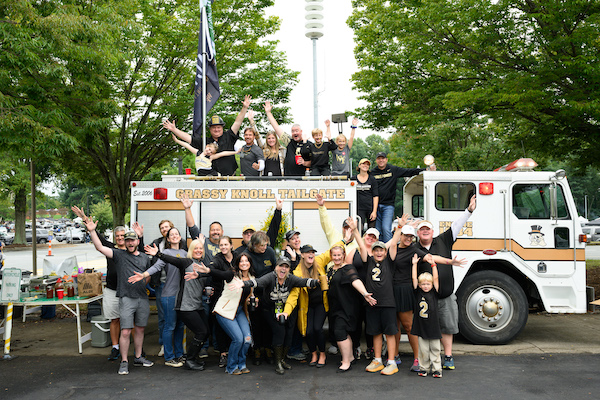
Photo/Lyndsie Schlink
How to Host a Crowd-Pleasing Tailgate
If you’re looking for the hottest tailgate at Allegacy Stadium next football season, look no farther than the alumni who set up on game days in an honest-to-goodness firetruck with black and gold stripes dubbed Engine 1834.
The Grassy Knoll Tailgaters were named Lowes Foods Tailgater of the Year in 2022. They have a prime parking spot for Engine 1834, a nod to Wake Forest’s founding year, at the intersection where the Blue, Red and Gold parking lots meet. A “pin” on Google Maps shows its precise location.
Travis Young (’03) leads the group, which includes college friends from the marching band and Alpha Phi Omega service fraternity, and other alumni. They first put out tables, chairs and grills on a slight grassy incline about 15 years ago and called themselves the Grassy Knoll Tailgaters. They had been using a trailer when they decided it was time to up their game.
“We were tailgating one day and had been out there a long time and had consumed a few beers,” Young recalls, “and somebody said, ‘Why don’t we get a firetruck? Nobody else has a firetruck.’ So everybody said, ‘That sounds good.’”
Young, who is a real-life volunteer firefighter, searched websites that sell old fire equipment and found the 1988 Peterbilt fire engine. The truck was first used by a department outside San Diego to fight brush fires and respond to automobile accidents before ending up at a volunteer fire department in East Tennessee.
Young struck a deal to buy the truck in 2018 for $4,000, with friends pitching in to help pay for it. Already painted white, the truck came “as is” with a water tank, pump and hoses that were later removed. The truck’s emergency lights and siren still work.
The tailgate menu is typical ballgame fare: pork shoulders, ribs, hamburgers and hot dogs or “kegs and eggs” for an early kickoff. The ACC Network featured the tailgate during a Wake Forest game in 2022.
Young works in finance for the Office of Clinical Research at Wake Forest School of Medicine. He parks the firetruck, which averages about 8 miles to the gallon, at the house he shares with his wife, Sarah Ivey Young (JD ’14), about 30 minutes from the stadium.
The truck is definitely a “head turner,” he says. “We get a lot of comments, (like) ‘This is the coolest tailgating apparatus I’ve ever seen.’ Kids love to come and climb on a real Wake Forest firetruck.”
__________________________
How to Live with “Zozobra”
The Spanish word zozobra might be unfamiliar, but its meaning explains a lot about our world today.
The word means anxiety in Spanish, but Mexican philosophers in the 1940s and ’50s, aware of their country’s history of upheavals, defined it as a particular flavor of anxiety associated with social disintegration, says Francisco Gallegos, assistant professor of philosophy who specializes in the politics of emotion.
Gallegos says zozobra arises “when social norms that govern your world are unstable, where there’s not a clear answer as to what you’re expected to do or what the right thing to do is, either for you on an individual level … or because … a society’s in process of transformation or disintegration, and there literally is no right answer anymore.”
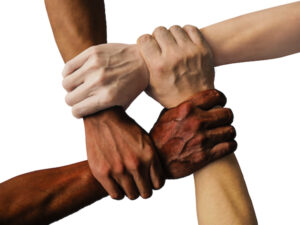
Photo/Use at Your Ease/Pixabay
It’s not merely a psychological state, but a state of existence without “a communal horizon of understanding” that gives shared meaning to what we do, say and value, Gallegos says.
Pandemic? Climate disasters? Distrust in institutions? Fear of cancellation for saying the “wrong” thing? You get the picture.
(The Spanish verb zozobrar means to capsize, as in a boat. Zozobra also is is the name given to a negative spirit, “The Gloomy One,” whose “effigy” has been burned in an annual ritual in Santa Fe, New Mexico, since the 1920s.)
How does zozobra affect us, and how can we live with it?
Mexican philosopher Jorge Portilla identified the effects of zozobra, Gallegos wrote in a piece that won the American Philosophical Association 2017 Essay Prize in Latin American Thought.
First, zozobra leads to inaction because people feel helpless and don’t know the right action to take. They develop cynicism: Why bother if you see no common good to defend, and effort is futile? They live in nostalgia, longing for a past that they believe made more sense. And they hold apocalyptic visions and “a profound sense of the fragility and contingency of life,” Gallegos wrote.
How to cope? A first step is to recognize the anxiety as collective. Gallegos says Portilla saw a disintegrating society “like a thin spiritual atmosphere that stunts everyone’s growth. … Things are not going to be able to grow, so people will think it’s their fault.”
Redirecting attention to the collective can help us focus on compassion for one’s self and for “the other whose behavior you might disagree with.”
Gallegos says connecting with others can reset our sense of community and commitment to basic values. If the collective is disintegrating, we can work to rebuild it. The University can help foster new social formations, he says. “One advantage of living in a time of zozobra is that traditional values are no longer cliché and quaint.”
__________________________
How to Encourage Others
You surely know Arnold Palmer (‘51, LL.D. ‘70) as a legendary Wake Forester, golfer and philanthropist. But did you know that he wrote letters prolifically throughout his life, replying to mail from fans and sending notes to other professional golfers?
The Wake Forest Traditions Council wanted to pay tribute to this part of Palmer’s life during its annual Arnold Palmer Day last spring, a partnership with the Arnold & Winnie Palmer Foundation. Students gather to drink Arnold Palmers (half iced tea and half lemonade), buy popular souvenir T-shirts and participate in golf trivia and other events throughout the week.
“In today’s world of texts and phone calls, receiving a physical note from someone can be incredibly uplifting, especially if you’re going through hard times,” says senior Woods Curry, co-chair of the Traditions Council.

Students on the council designed postcards using cheerful photos of springtime on Wake Forest’s campus, true to the feel of Arnold Palmer Day, celebrated on the first day of the Masters golf tournament. The Traditions Council asked students gathered on Manchester Plaza to write encouraging messages on the postcards to children battling illness at Brenner Children’s Hospital in Winston-Salem and at the Orlando Health Arnold Palmer Hospital for Children in Florida. The project honored the commitment Palmer and his wife, Winnie, had to children’s health.
Students penned over 160 postcards using colorful markers. “You inspire me! Keep fighting hard!” one note read. “Sending you sunny smiles. Hope this brightens your day!” read another. “You are so awesome, strong, and brave! Keep being you, because you are simply the best. Keep it up!”
Traditions Council members mailed the notes to the children’s hospitals for kids to hang in their rooms for encouragement. For Wake Forest students, it was an opportunity to carry on the Pro Humanitate spirit that the Palmers modeled. “Not only does it make you feel good to receive a letter from someone hoping you’re doing well, but it also feels good to write them,” Curry says. “It’s just special.”
__________________________
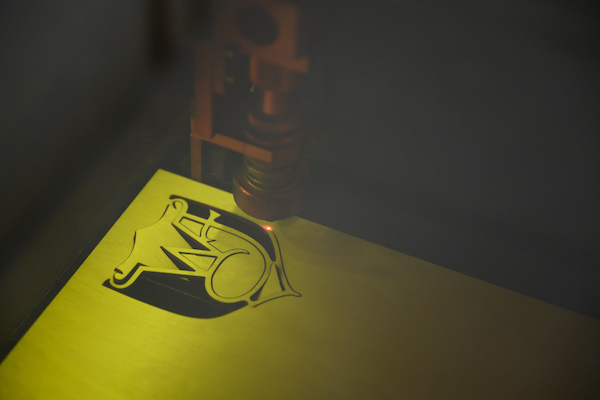
Photos/Lyndsie Schlink
How to Make Things on Campus with a High Fun Factor
No how-to list would be complete without WakerSpace, a meh-looking, trailer-style building at the edge of parking lot Q behind Wait Chapel.
What happens inside is anything but bland and not the least bit meh. You think Disneyland is the happiest place on Earth? Paul Whitener (P ’18, ’22, ’23), assistant director of digital fabrication and maker education, begs to differ. WakerSpace is tops, and, yes, that comes from the guy dispatched by Information Systems to work with students to launch the making in November 2018. Now, Whitener runs the place. And, yes, he’s the guy likely to be crowned happiest employee at Wake Forest if there were such a competition. “I love my job!” he says. “I have the best job on campus!”
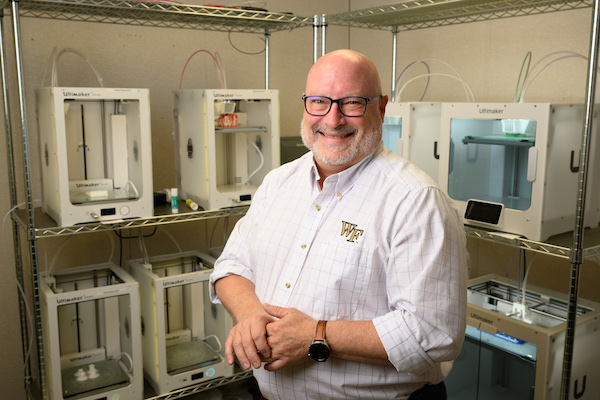
Paul Whitener (P ’18, ’22, ’23), who runs WakerSpace
Step inside WakerSpace to understand why. To set the mood, you might pick a tune by The Temptations or Jimmy Buffett on the vintage jukebox in the “parlor” — seriously, that’s its name. You’re in a makerspace, defined on the wall as “a communal DIY place where all students and faculty can collaborate to learn, create and innovate using basic to advanced craft and engineering technology.” Staff members are welcome, too. Create to your heart’s content here, and in the process, tend to your well-being through tactile pursuits.
The possibilities spark the imagination. Need to know how to use a 3D printer? Whitener and his cheerful troupe of student volunteers teach a workshop as your first step. Same with a laser cutter. Once you’ve been trained on the tricky machines (and safety), you can work your magic.

For one science class, students used 3D printers to make protein models. Art history students employed them to fabricate architectural elements. A football player used a laser cutter to create wooden plaques emblazoned with poems he had written. The “Little Green Dress” class had students dyeing yarns with natural dyes and discussing sustainability in the fashion industry. The finale: a fashion show.
You can learn to knit and crochet. You can use the sewing and embroidery machines to rework a thrift store find. Want to paint? Find the acrylics and watercolors in the locker. Head to the room with fancy tools, and you can fix
your bike. Finished? Step into the podcast room and tell the world about it.
WakerSpace visitors arrive and learn to do something they’ve never done before. “The joy, the thrill, the excitement they have!” Whitener says. He has seen the glory of it all.
__________________________
How to Create a Successful Restaurant Concept
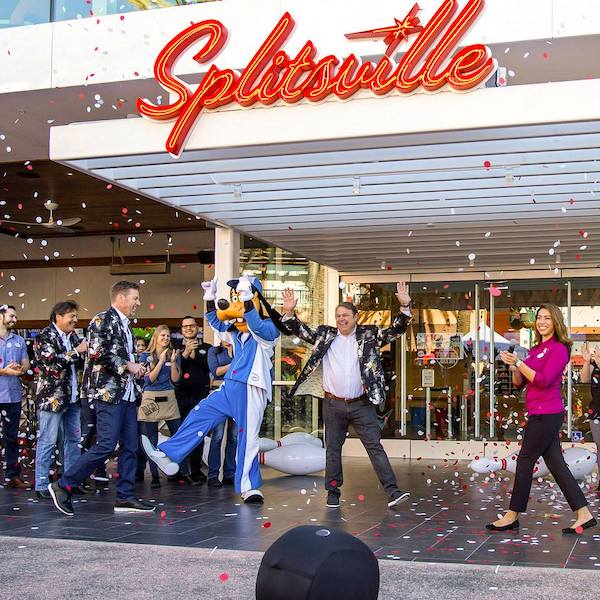
On either side of Goofy, Guy Revelle (‘87, P ‘18, ‘25), right, and Mark Gibson (‘87) celebrate as Splitsville opens in Anaheim, California. Photo/The Walt Disney Co.
Guy Revelle III (’87, P ’18, ’25) and Mark Gibson (’87) see themselves as perfect foils in the thriving restaurant business they’ve built for 36 years.
Their Millennium Management Group Inc. (MMG) operates 11 venues, including two at Disneyland Park in Anaheim, California, three at Walt Disney World Resort’s Disney Springs and six elsewhere in Florida, where the friends both live with their families.
Revelle, a history major from eastern North Carolina, says he and Gibson both handle operations and real estate, but Revelle is more of “a marketing concept creative guy. … I’m the optimist.”
Gibson, a mathematics/economics joint major from New Jersey, brainstorms with his friend and crunches numbers. (“Somebody had to do it,” he says.) He acknowledges he’s the pessimist — hence his answer when asked how to create a successful restaurant concept.
“My first bit of advice would be, ‘Don’t get into the restaurant/bar business,’” Gibson says, noting that roughly 90% of restaurants fail in the first two years.
Revelle says success requires work ethic, passion and creativity. “What takes it to the next level? I think it’s culture, relationships and partnerships,” he says. He and Gibson have senior executives who stick around, some for more than three decades. Their company teams up with award-winning chefs and creates niches that emphasize entertainment. Location is key, and the 1,500 employees make or break the business, the partners say. “(Disney) put us through their wringers to make sure that the guest is always right,” Revelle says. “It really has operationally made us even better.”
Their three Splitsville Luxury Lanes restaurants combine high-end bowling lanes with high-end, shareable food. “We jokingly said the bar was set pretty low for food at a bowling alley,” Revelle says.
Their wives thought they were crazy for planning two restaurants during the COVID-19 pandemic, which temporarily froze their business, he says. One is Everglazed Donuts & Cold Brew — the coffee kind and the beer kind — at Disney World. Revelle’s son, Mac, a junior at Wake Forest, casually offered the name in honor of the Everglades. Guess it runs in the family.
Gibson advises starting with a restaurant group that helps with infrastructure, hiring, marketing and solving problems. Even after all these years, he says, “There’s always 20, 30, 40 things between Day 1 and Day 31. You’re, like, ‘Oops, didn’t think about that.’”
Persevere through failures and embrace the daily grind, they say. Revelle remembers long weekends at work while his Sigma Chi fraternity brothers who became bankers or lawyers played golf.
“If you love what you do and you’re passionate about what you do, you don’t work any day — you just live in it,” Revelle says.
__________________________
How to View Minority Representation in Movies
Filmmakers’ decision making on how to include and depict minorities, women and specific ethnic or gender roles is ”often fraught with peril,” says Phillip Cunningham, assistant professor of media studies.
Producers had to consider whether to risk hundreds of millions of dollars in 2018 to make “Black Panther,” which is a “Black movie,” meaning one with a Black director, a cast that is predominantly Black and a focus on some aspect of Black experience. How could they measure the risk, without precedent for a Black action film exceeding the previous top production cost of $100 million? Should they accept the conventional wisdom that Black films don’t sell well internationally, that African American culture is too uniquely American? (It turns out it was well worth the risk. The film, with a $200 million production budget, has brought in more than $1.3 billion worldwide. The 2022 sequel, “Black Panther: Wakanda Forever,” succeeded on a similar scale.)
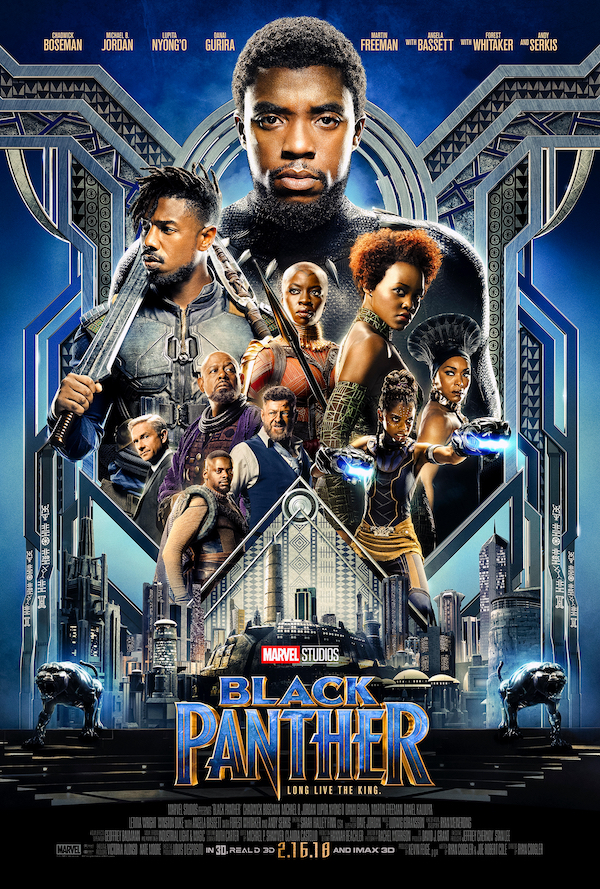
Photo/Alamy/BFA/Walt Disney Studios
For consumers, the first question some might ask, Cunningham says, is whether representation still matters in 2024. He says the answer is “yes.” Research at UCLA and USC Annenberg School for Communication and Journalism “bears out that, to some degree — yes, we’ve improved, (particularly on television, he notes). … If you base things (on) percentages of population, Black folks are oftentimes overrepresented in entertainment media, whereas Latinos and Asian Americans and those who happen to be LGBTQ+ are often underrepresented.”
How should viewers assess representation? Cunningham suggests paying attention not only to quantity but the quality and complexity of characters. Do they have significant dialogue or stay in the background? Do they have power in their roles? Are they shown with stereotypes — do Black superheroes or villains have physical strength as a superpower rather than mental or scientific abilities? Do women talk to each other and influence the action or just respond to male characters? Do the characters exist only to advance the story of the white protagonist?
Cunningham cautions against thinking representation is a settled issue. He wrote an essay for The Conversation website in 2023 noting that the first “Black Panther” movie did not open the financial floodgates for Black films as expected, and he is wary of assuming that the sequel will.
“When there’s a vacuum created in representation, even if it’s just a perceived vacuum, people tend to get up in arms about it,” he says.
__________________________
Think about Time Travel
Just to get this part up top: These are the best time-travel movies with plausible narratives, according to Professor of Philosophy Adrian Bardon. He teaches about time, including time travel, and is author of “A Brief History of the Philosophy of Time.”
“I have very strong views about what constitutes an acceptable time-travel narrative,” Bardon says. Here is his list: “The Terminator” (1984), “Harry Potter and the Prisoner of Azkaban” (2004), “12 Monkeys” (1995), “Timecrimes” (original Spanish title “Los Cronocrímenes” 2007), “Tenet” (2020), “Interstellar” (2014) and his favorite, “Predestination” (2014).
Now for the brain puzzles: the science and philosophy of time travel. First, is it possible? “The laws of physics, as far as we can tell, do not rule it out,” Bardon says — though possible doesn’t mean feasible.
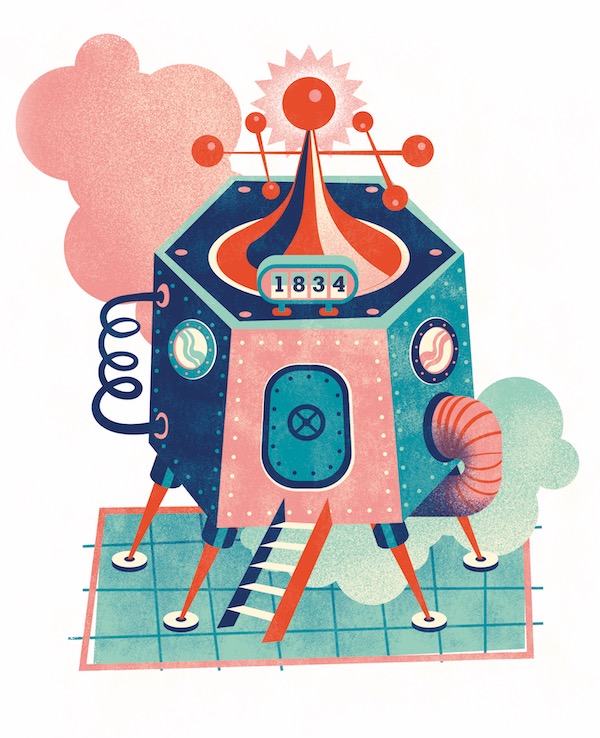
Travel to the future actually was measured decades ago by scientists. “They just took an atomic clock and its twin on earth, and they put one on a passenger plane,” Bardon says. When the plane returned from its trip, the clock aboard it and the one on the ground diverged by exactly the tiny fraction of a second that Einstein’s theory of relativity predicted. The pilot had traveled to the future, albeit not far.
As for travel to the past, no one has shown that it’s theoretically impossible, Bardon says. Einstein’s friend, mathematician Kurt Gödel (portrayed in the “Oppenheimer” movie), calculated a rotating space-time universe that would allow for a possible path of existence that circles back onto itself, going backward in time. Theories for “worm-holes” in the space-time continuum also allow for a path to the past. But the amount of energy required “even to send one marble back one second in time” would be “cosmic in scale,” Bardon says. So, don’t buy any tickets to the past.
There’s only one story for the universe. It’s a book already written, so it could include time travel, but that time travel has and always will be part of the same story. If Harry Potter goes back in time, he has always gone back in time. Bardon says that movies (to wit: “Back to the Future”) in which time travelers influence the future by changing the past are faulty narratives.
In relativity, “now” only exists in a frame of reference, not as an absolute, Bardon says. In the current block theory of the universe, time and space are points in an unchanging four-dimensional block. In one frame of reference for “now,” the dinosaurs are alive. In another “now,” the Battle of Waterloo is taking place. “All those things have the same status,” Bardon says.
“The past is not done with; the past exists.”
__________________________
How to Make an Elevator Pitch
You’re on an elevator. You have 60 to 90 seconds to make your pitch. Or maybe three to five minutes total as you step into the lobby and keep talking. Be ready to sell your idea — and fast.
Associate Professor of Communication Rebecca Gill, the Larry J. and LeeAnn E. Merlo Presidential Chair for Communications and Entrepreneurship, helps Wake Forest students breathe easier as they envision addressing potential investors. Anyone with a great idea to sell can find value in her advice.
Gill says the people pitching need to think not only about the content of their message, but also about the stories they are telling, how they are making connections with their audience, their ability to speak clearly and their persuasiveness in assuring the listener of the pitchers’ competence.
In short, be prepared.
Gill breaks it down into four elements a pitcher needs to accomplish: identifying yourself and your company, explaining the problem you’re solving, describing your solution and asking what you need. Be ready for longer conversations by preparing with this seven-step structure: First, create your one-sentence introduction, which makes your idea meaningful in light of another idea. “If you’re trying to sell Bitcoin (as an idea), then you want to say, ‘Well, it’s digital money,’” Gill says. “If you’re talking about mining Bitcoin in a computer, that’s where it gets confusing.”
“...you really want to be trying to bring something to life that doesn’t yet exist, make something that doesn’t yet exist seem real and then also connect with the audience, which is always through story.”
Second, explain how your idea solves “a headache problem” — better yet, “a migraine problem” — not something that can be fixed by taking a vitamin. “You want to show them it’s a big problem; it’s an important problem; it’s a meaningful problem for whoever the audience is.”
Third, present the solution. “This is where you say, ‘I’ve got the painkiller. This fixes the problem because it’s better, or it’s faster, or it’s different.’” Fourth, define your target customer and the size of your market. Fifth, talk about your team — why you should be listened to and who you’ve brought on your team to make up for any of your gaps.
Sixth, show traction for your idea by mentioning early adopters or funding received. Last is the ask: Make a clear statement of next-step needs, whether they be investors, advisers or expert assistance.
“Throughout all of this,” she says, “you really want to be trying to bring something to life that doesn’t yet exist, make something that doesn’t yet exist seem real and then also connect with the audience, which is always through story.”
One other pro tip: Gill recommends “The Pitch” podcast for good and bad ways to pitch an idea.
__________________________
How to Become an NBA Team’s No. 1 Fan
An Orlando Magic game isn’t over until the Fat Guy has done his shtick. Superfan Dennis Salvagio (JD ’73), aka the Fat Guy, “has been entertaining fellow fans for decades with his rousing, rollicking, dancing, prancing support of the team.” That’s how the Orlando Sentinel has described his game antics.
Salvagio, a retired criminal defense lawyer, brings the fun to Magic games in custom-made blue, white and black outfits. “Basically, I’m the guy who gets the crowd up when they need to get up. I look at myself and think, ‘What’s that crazy (guy) doing?’ Yet everybody loves it.”
His devotion to the Magic spans nearly 35 years. The NBA television show “Inside Stuff” named Salvagio fan of the year in 1991. The sports website Deadspin named him the Magic’s top fan in 2022. The Seattle Times has even given him a shoutout: “The short, round Orlando lawyer with his long, curly mop of hair became a Florida celebrity … when he began jogging — well, chugging — around the arena floor during critical moments of Magic games, bringing fans to their feet.”

Photo/Gary W. Green/Orlando Sentinel/Tribune News Service via Getty Images
Salvagio shot to fame on March 3, 1990. “I was discovered before Shaq (Shaquille O’Neal) and Penny (Hardaway),” he points out. Orlando, in its first season in the NBA, was locked in a tight game against the then-Washington Bullets. Salvagio was shown on the arena’s large screen dancing — swinging his hips, “boom, boom right” and “boom, boom left” — and encouraging fans to stand up and cheer. Orlando’s mascot, Stuff the Magic Dragon, kissed him, and the crowd went wild.
The Orlando Sentinel wrote that he “stole the show” and dubbed him “the Fat Guy.” And no, he’s not offended by the name. Salvagio, who is 5 feet 4 inches tall, weighed about 300 pounds at one time but has slimmed down to 167 pounds.
He’s often recognized around Orlando — and once on vacation in Rome — with shouts of “Hey, Fat Guy!” With notoriety comes responsibility to give back, he says. He speaks to school and civic groups, hosts charity events and sponsors a golf tournament to raise money for schools.
At 75, Salvagio is in better shape than ever. “Who else my age gets to do something like this?” he asks. “The kids who were 5 and 10 when I started 35 years ago are now 40 and 45 and have kids of their own. They bring their children up to see me at the games and we high-five one another.”
__________________________
Read more how-to stories:
How to:
How to:
How to:


